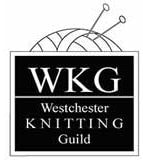|
Short rows create wedges in knitting to create shaping for bust darts, sock heels, ear flaps — basically to build volume within the edges of knitting to change the shape. There are several different methods and the choice to use one over another can vary from personal preference to carefully matching the best technique for a yarn and project. Three common methods are Wrap & Turn, German and Japanese. There are many online resources for investigating which method may work best for a project. Here are some links to get started viewing tutorials by different sources. Wrap & Turn (wrapping the working yarn around a stitch) Pros: Best for knitted lace or looser fabrics Cons: Can create loose spots since the wraps add extra yarn Online video tutorial and photo tutorial by Purl Soho: https://www.purlsoho.com/create/short-rows-wrap-turn/ German (using a slipped and lifted stitch) Pros: Simpler than Wrap & Turn; creates smooth fabric Cons: Make sure to review how to convert from a Wrap & Turn short row if German is not specified (shown in video below) Online video tutorial by VeryPink Knits: https://youtu.be/52qy8OOb-s0 Japanese (using a stitch marker to lift and slip a stitch) Pros: Best for smooth yarns that may show unevenness in a short row since this method creates the least amount of looseness in stitches Cons: More fiddly than other methods Online video tutoria by Holli Yeah : https://youtu.be/F3CIOMsVcLM Patterns with short rowsTry out different methods of short rows on these free short row patterns available on Ravelry:
|
Archives
April 2022
Categories |
© COPYRIGHT 2023. ALL RIGHTS RESERVED.

 RSS Feed
RSS Feed


